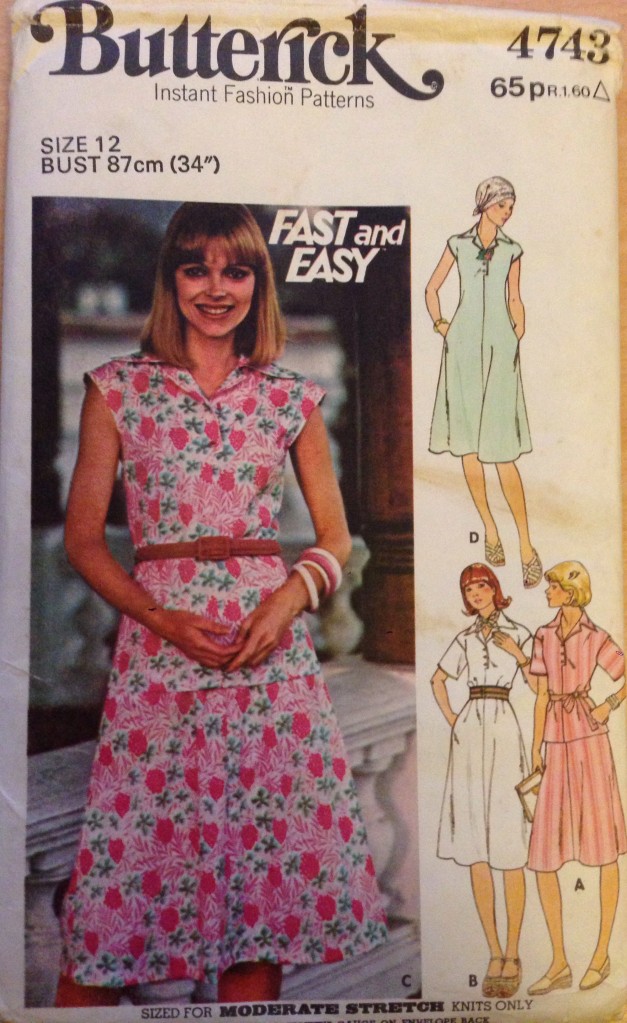One of the many things that I love about working with an older pattern is drawing deductions about the time that the pattern was written. I have no clue where you would start to search for contemporary accounts from seventies seamstresses. The archives of Houseparty or Womans Weekly? It matters not, I’m shunning the rigorous research of my day job in favour of amusing myself by making wild assumptions and drawing dubious conclusions. Here goes…
 Butterick 4743 has no copyright date but is clearly priced at the princely sum of 65 pence. I’m going to assume that this makes it post decimalisation and therefore post 1971. The styling suggests to me that it is not very far past the post of 1971.
Butterick 4743 has no copyright date but is clearly priced at the princely sum of 65 pence. I’m going to assume that this makes it post decimalisation and therefore post 1971. The styling suggests to me that it is not very far past the post of 1971.
Nary a mention is made in the instructions of the need for an overlocker or a coverstitch machine. The seam finishes suggested are all zig-zag, turn under and stitch. The assumption is that your interfacing will be sewn in rather than ironed on.
So far, so what, you might say. Well, I suspect that the seamstresses of the 70s had no expectation that their hand-fashioned garments would have the finish of shop-bought knits. Maybe in expecting to fashion your buttonholes by hand your expectation was that the entire garment would look hand-made. And, that looking hand-made was a good thing.
What say you my fellow seam finishers and my fellow #vintagepledgers?







You’ve made a lovely rendition of the dress. I was a teen in the 70s and would have worn this dress in a minute. I also worked in a fabric store and the only knits we sold were double knit. No seam finish needed at all, really! I got my first serger in the early 90s and it was both expensive and bulky so yes, this pattern far predates those machines for the home sewist.
Thanks! I was only just into double figures by the end of the 70s but I do remember fabric shopping with my Mum at the time and I remember very little knit being available.
I hadn’t realised that sergers for home sewing had been around since the 90s!
I learned to sew (1980s) with zig zagged seam finishes, and if you do it well (small and neat) you can get it to sort of fold under and it looks great. We had an overlocker in the classroom (an industrial one) but it was looked down on for the couture techniques we were trying to create. Also button holes had to be created in four stages using the zig zag stitch. Nice dress by the way. I love it.
That’s interesting to hear. Do you feel that the industrial/commercial finish versus the couture finish has shifted, particularly with home sewing? Or are we in a time where the best of both can be embraced at home – if you are fortunate to have access to all the kit?
Great question Penny. I don’t know really. A hand picked zip v. an invisible zip. I prefer the invisible really, but I am glad I can do it the other way when required. A automatic machine button hole is much better than hand sewn unless you are very skilled, but if you are very skilled handsewn is best. And generally I don’t use the overlocker much as I prefer a lining.
Early 70’s had double knits with no finishes and very simple patterns like this that could be used for either wovens or knits.Long pointy collars, self made tie belts and some even came with knitted hats with a big flower on the side. I still have some of my patterns from 1971, the year I was first married, husband is long gone but those patterns remain…ha ha!